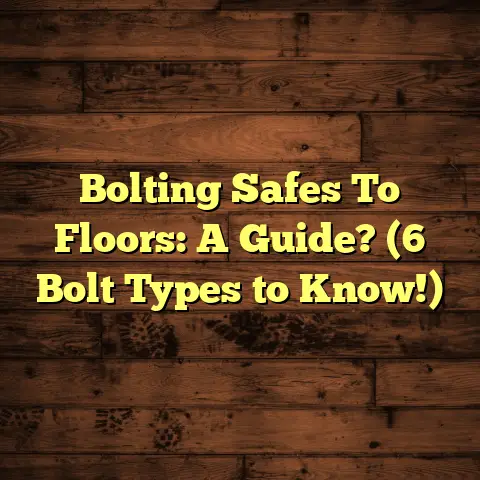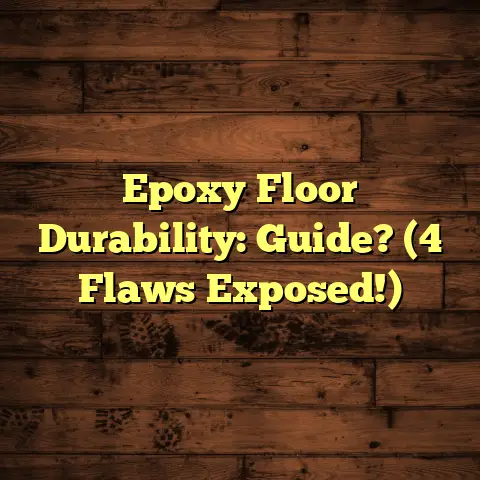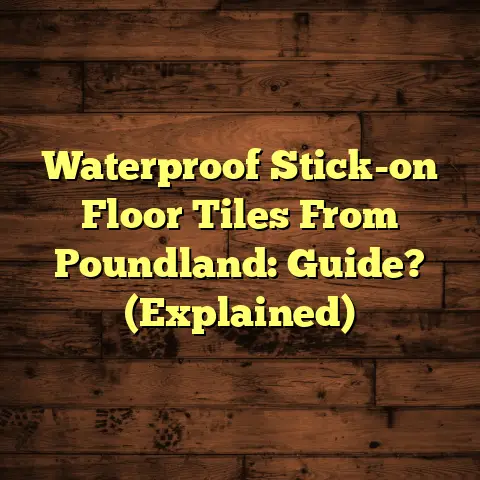Swiffer on Hardwood: Safe or Sorry? (1 Mistake!)
Did you know that using a Swiffer on your beautiful hardwood floors could actually be doing more harm than good?
Yeah, I know, it sounds crazy!
But trust me, after years in the flooring business, I’ve seen the damage firsthand.
Many homeowners are completely unaware of this hidden risk, and that’s why I’m here to spill the beans (and maybe save your floors in the process!).
Overview of Swiffer Products
Okay, let’s start with the basics.
Swiffer has become a household name, right?
They offer a range of products designed to make cleaning easier, and faster.
You’ve got the Swiffer WetJet, spraying solution as you go.
Then there’s the classic Swiffer Sweeper, using dry or slightly damp pads to pick up dust and dirt.
And who can forget the Swiffer Dusters, perfect for those hard- to-reach spots?
These products are super popular because, let’s face it, nobody loves cleaning.
They’re convenient, affordable, and promise a sparkling clean with minimal effort.
But are they really the best choice for your hardwood floors? That’s what we’re digging into today.
Understanding Hardwood Flooring
Before we get into the nitty-gritty of Swiffers, let’s talk about hardwood floors themselves.
I’m talking about what they are, and why they need special care.
Hardwood flooring comes in a variety of wood types, like oak, maple, walnut, and cherry.
Each wood has its own unique grain pattern, color, and hardness.
Then you’ve got different finishes, like polyurethane, varnish, or oil- based finishes.
These finishes protect the wood from scratches, moisture, and everyday wear and tear.
But here’s the thing: hardwood is a natural material.
It’s porous, meaning it can absorb liquids.
And certain cleaning methods and products can strip away the finish, damage the wood, or leave behind a dull residue.
That’s why it’s crucial to choose the right cleaning approach.
The Science Behind Swiffer Products
Alright, let’s put on our science hats for a minute.
What’s actually in those Swiffer cleaning solutions?
Well, the exact ingredients can vary depending on the product, but they typically include:
- Water
- Solvents (like alcohol or glycol ethers)
- Surfactants (to help lift dirt)
- Preservatives
- Fragrances
Now, some of these ingredients, especially the solvents and surfactants, can be a bit harsh on hardwood finishes.
They can break down the protective layer over time, leading to dullness and even damage.
The pH level of the cleaning solution also plays a role.
A highly acidic or alkaline solution can etch or discolor the finish.
While Swiffer claims their products are safe for hardwood, I’ve seen enough evidence to suggest otherwise, especially with repeated use.
The 1 Mistake Homeowners Make
Okay, drumroll please…
The biggest mistake I see homeowners make when using Swiffers on hardwood is using the WetJet or similar wet pads too frequently, and leaving excess moisture on the floor.
Think about it: you’re spraying a cleaning solution directly onto your floors, and then wiping it up with a pad.
But it’s nearly impossible to get all the liquid up.
Some of it inevitably seeps into the seams between the boards, or settles on the surface.
Over time, this excess moisture can cause the wood to warp, swell, or even develop mold.
I’ve seen floors with cupping (where the edges of the boards are higher than the center) because of this!
One homeowner I worked with, Sarah, used the WetJet every other day because she had pets.
She thought she was keeping her floors clean, but after a few years, the finish started to look cloudy, and the boards began to separate.
It ended up costing her thousands of dollars to refinish the floors.
I know other contractors, and have seen similar scenarios.
Potential Consequences of This Mistake
So, what happens when you make this mistake?
Well, the negative impacts on your hardwood flooring can be significant.
Here’s what you might see:
-
Dullness or Loss of Shine: The cleaning solution can strip away the protective finish, leaving your floors looking lifeless.
-
Damage to the Finish: Harsh chemicals can etch or discolor the finish, creating unsightly spots or streaks.
-
Long-Term Wear and Tear on the Wood: Excess moisture can cause the wood to warp, swell, or crack, leading to costly repairs.
-
Residue Buildup: Some Swiffer solutions can leave behind a sticky residue that attracts dirt and makes your floors look even dirtier over time.
According to the National Wood Flooring Association (NWFA), proper maintenance is crucial for extending the life of your hardwood floors.
They recommend using cleaning products specifically designed for hardwood and avoiding excessive moisture.
Comparative Analysis
So, how do Swiffer products stack up against other cleaning methods?
Let’s compare:
| Cleaning Method | Pros | Cons |
|---|---|---|
| Swiffer WetJet | Convenient, easy to use, readily available | Can leave excess moisture, potential for finish damage, may leave residue |
| Swiffer Sweeper | Good for dry dusting, lightweight, disposable pads | Doesn’t deep clean, may not be effective on textured floors |
| Traditional Mop & Bucket | Affordable, allows for controlled moisture, can use specialized wood cleaners | More labor-intensive, requires proper wringing, can spread dirty water if not changed frequently |
| Microfiber Mop & Spray | Gentle on floors, reusable pads, allows for controlled moisture | Requires purchasing separate cleaning solution, can be more expensive upfront |
| Vacuum with Hardwood | ||
| Floor Attachment | Effective for removing dust and debris, prevents scratching | May not remove sticky residue, requires a vacuum with appropriate attachment |
As you can see, each method has its own advantages and disadvantages.
While Swiffer products offer convenience, they may not be the safest or most effective option for long-term hardwood floor care.
Expert Recommendations
So, what should you use to clean your hardwood floors?
Here’s what I, and other flooring experts, recommend:
-
Vacuum Regularly: Use a vacuum with a soft brush attachment to remove dust, dirt, and pet hair.
This is your first line of defense against scratches and dullness.
-
Use a Microfiber Mop: Dampen a microfiber mop with a hardwood- specific cleaner.
Make sure the mop is only slightly damp, not soaking wet.
-
Choose the Right Cleaner: Look for pH-neutral cleaners specifically formulated for hardwood floors.
Avoid products containing ammonia, bleach, or vinegar, as these can damage the finish.
-
Follow the Manufacturer’s Instructions: Always read and follow the cleaning instructions provided by your flooring manufacturer.
-
Spot Clean Spills Immediately: Wipe up spills as soon as they happen to prevent staining or water damage.
-
Consider Professional Cleaning: For deep cleaning or stubborn stains, consider hiring a professional hardwood floor cleaner.
My go-to cleaner is Bona Hardwood Floor Cleaner.
It’s pH-neutral, safe for all types of hardwood finishes, and leaves no residue.
I’ve been using it for years, and I’ve never had a problem.
Conclusion
So, is Swiffer on hardwood floors safe or sorry?
The answer, as you probably guessed, is it depends.
While Swiffer products can be convenient for quick cleanups, using them too frequently, or using the wrong type of product, can lead to irreversible damage.
Remember that one big mistake: leaving excess moisture on the floor.
By being informed, choosing the right cleaning methods, and following expert recommendations, you can keep your hardwood floors looking beautiful for years to come.
Don’t sacrifice the long-term health of your floors for short-term convenience.
Your floors will thank you for it!





